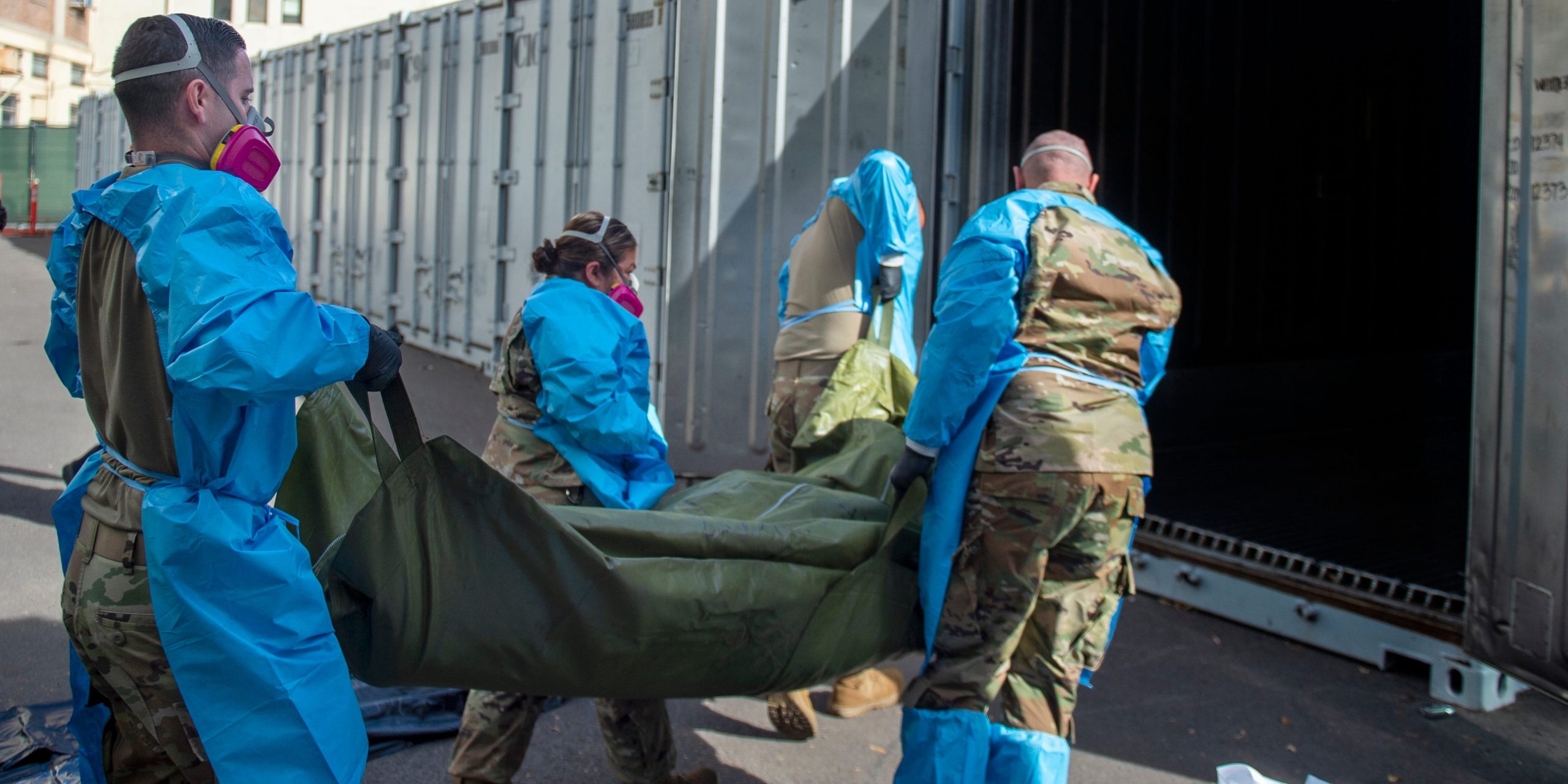
LA County Dept. of Medical Examiner-Coroner/ASSOCIATED PRESS
- LA County’s Latino residents are dying from COVID-19 at nearly triple the rate of white residents.
- Some Latino neighborhoods are overcrowded and home to a high proportion of essential workers.
- Black and Asian residents of the county have also seen dramatic spikes, according to the LA Times.
- Visit Insider’s homepage for more stories.
Los Angeles County is witnessing “horrifying” new levels of COVID-19 deaths among its Latino population, prompting new calls for more government assistance for essential workers and those living in overcrowded housing, according to the Los Angeles Times
The virus death rate for Latinos in LA County is nearly triple that of white residents among all groups, the newspaper reported.
The most recent surge has caused deaths among Latino residents to skyrocket more than 1,000% since the fall.
Over a two-week period in November, the number of LA County Latino residents dying from the virus daily was 3½ per 100,000, on average, according to the outlet. That number has now soared to 40 deaths per 100,000 Latino residents.
“Our Latinx community is, in fact, bearing the worst of this pandemic,” LA County Public Health Director Barbara Ferrer told The Times.
Latinos and other people of color have been disproportionately hit by the virus since the beginning. A report from the Centers for Disease Control and Prevention this summer found that Hispanic and Black patients represented nearly two-thirds of COVID-19 deaths among people younger than 65.
Former Surgeon General Jerome Adams told Insider in July that some of the virus's disproportionate impact on people of color could be attributed to "social determinants of health."
LA County is the most populous county in the nation, and also has the highest share of overcrowded houses in any major metropolitan area in the US. Certain Latino neighborhoods are overcrowded and home to a high proportion of essential workers, The Times reported.
Latino workers also have the highest rate of employment in front-line jobs that have a high risk of exposure to COVID-19, according to the UC Berkeley Labor Center.
According to the LA Times, 55% of Latinos work such jobs, and 48% of Black residents do. Meanwhile, 35% of white residents are working on the front-lines.
Officials think these essential workers are exposed to the virus on the job only to bring it home and spread it among family members and housemates.
"While every single race and ethnicity group in LA County has seen a horrendous increase in mortality rates, the gap between the experiences of those in our Latinx community and all others is frankly horrifying," Ferrer said.
Despite being a current virus epicenter, LA's restaurants reopened for outdoor dining Friday, even though restaurant workers under 65 are still not eligible for the vaccine.
Other residents of the county have also seen a COVID-19 death rate jump since November. Black residents now have, on average, 20 deaths per day per 100,000 residents, up from one death a day in the fall, according to the LA Times. Asian residents' rate grew from one daily death per 100,000 in November to 17 deaths per 100,000.
At a press conference earlier this month, Los Angeles City Council President Nury Martinez said the inequity can't be ignored. She said the government should be providing aid to LA's hardest-hit communities and that vaccinating essential workers is crucial.
"If we don't focus on equity now, I'll tell you who is going to get the vaccine: It'll be the people who have the luxury to stay at home and send their children to open private schools and neighborhood learning pods," Martinez said. "And the people who will not get the vaccine will be the nannies, the maids, the housekeepers and the gardeners, the people who take our groceries, who prepare our food every day, who deliver our mail and clean our streets."
LA County officials are voicing increased concern about inadequate vaccine access for the people who need it most, The Times reported. There are reportedly concerns that there's a lower rate of available vaccines for healthcare workers who live in South LA, an area home to substantial populations of Latino and Black residents.
Officials said they hoped that more predictable shipments and the possibility of an approved vaccine manufactured by Johnson & Johnson, could help.